In a world where web applications are as common as coffee shops, ReactJS development stands out like that one barista who knows your order by heart. This powerful JavaScript library makes building user interfaces a breeze, turning developers into code-wielding superheroes. With its component-based architecture and lightning-fast performance, ReactJS not only saves time but also keeps users coming back for more—like that irresistible slice of pizza you can’t resist.
But it’s not just about speed and efficiency; ReactJS offers a vibrant community and a treasure trove of resources. Whether you’re a seasoned pro or just starting out, diving into ReactJS can feel like joining an exclusive club where everyone speaks the same language—JavaScript, of course. So grab your keyboard and let’s explore why ReactJS is the go-to choice for modern web development, where creativity meets functionality in perfect harmony.
Table of Contents
ToggleOverview of ReactJS Development
ReactJS stands out for its efficiency in building dynamic user interfaces. This JavaScript library, created by Facebook, allows developers to create reusable UI components. Components encapsulate their own logic, promoting code reusability and separation of concerns.
Developers benefit from ReactDOM, which enables rendering components to the Document Object Model (DOM) smoothly. The virtual DOM enhances performance by minimizing direct manipulation of the actual DOM, leading to faster load times and a better user experience.
ReactJS employs a one-way data flow, simplifying the data management process. This unidirectional data flow ensures predictable behavior in applications, making debugging easier. Developers can use libraries like Redux or Context API alongside React for state management, fostering seamless integration of complex states.
Moreover, the React ecosystem offers tools such as Create React App for quick project initialization. This tool eliminates configuration hassles, allowing developers to focus on coding rather than setup. Extensive documentation and community support further enhance the development experience, helping both beginners and seasoned developers troubleshoot issues.
In addition, React’s strong performance across devices increases its appeal for modern web development. Progressive web apps and mobile applications leverage React Native, a framework based on ReactJS, allowing developers to write native applications using familiar JavaScript and React principles.
ReactJS development catalyzes rapid iteration and creativity in building web applications, reinforcing its position as a leading technology in the industry.
Key Features of ReactJS
ReactJS offers several key features that enhance the development process, making it a popular choice among developers.
Component-Based Architecture
Component-based architecture acts as a foundational aspect of ReactJS. Developers create encapsulated components that manage their own state and logic. Reusable components improve consistency and reduce development time. Each component can be composed to form complex user interfaces, facilitating better organization of code. This approach streamlines testing and maintenance while promoting a clear structure.
Virtual DOM
Virtual DOM provides significant performance benefits. ReactJS maintains a lightweight copy of the actual DOM, allowing for efficient updates and rendering. Changes to the user interface trigger minimal re-renders, resulting in faster load times. By calculating the differences between the virtual and real DOM, React optimizes updates, enhancing the overall user experience. This efficiency is particularly noticeable in applications with dynamic content.
Unidirectional Data Flow
Unidirectional data flow simplifies data management. Data flows in a single direction, making the application state predictable. This transparency aids in tracking changes and debugging while improving overall coherence. Developers often utilize state management libraries like Redux or Context API to handle more complex states effectively. Maintaining a clear data stream minimizes confusion and fosters better collaboration across teams.
Benefits of Using ReactJS
ReactJS offers several advantages that enhance the development experience and improve application performance.
Performance Optimization
Fast rendering is a key feature of ReactJS. The library’s virtual DOM enables efficient updates, minimizing the impact on load times. Updates occur quickly because React only re-renders components that change, reducing overall workload on the browser. When developers use this approach, applications handle dynamic content seamlessly. Consequently, users experience smoother interactions, contributing to higher retention rates. React’s performance optimization directly influences user satisfaction.
Reusability of Components
Component reusability is one of ReactJS’s standout benefits. Developers create encapsulated UI components that maintain their state and logic. These components can be reused across different parts of an application or even in multiple projects. This modular approach reduces redundancy in code, streamlining development processes. When changes occur, updating a component in one location reflects across all instances, simplifying maintenance. Therefore, this approach enhances overall productivity for developers.
Strong Community Support
A robust community surrounds ReactJS, fostering a wealth of resources for developers. This includes tutorials, forums, and documentation, which support both beginners and seasoned professionals. Collaborations emerge frequently, enriching the ecosystem with new tools and libraries. Developers can leverage the insights of others, enhancing their own skills and problem-solving strategies. Peer support encourages knowledge sharing, creating an environment where innovation thrives. Community engagement plays a vital role in ReactJS’s continued growth and effectiveness.
Getting Started with ReactJS Development
ReactJS development begins with setting up your environment and creating your first application. Preparation ensures a smooth coding experience.
Setting Up the Environment
Install Node.js to run JavaScript on the server side. Choose a code editor, such as Visual Studio Code, for writing code effectively. Use npm to manage packages and dependencies seamlessly. Start by creating a new folder for your project to organize files correctly. Open a terminal in that folder to execute commands. Run npx create-react-app my-app to scaffold a new React project quickly. This command initializes a project structure and installs essential dependencies automatically. After installation, change to the project directory with cd my-app to access your newly created application files.
Creating Your First React App
In the project folder, open src/App.js. Replace the default content with a basic functional component to kick things off. Import React at the top of the file, then create a simple component that returns a JSX element. For example, add code like <h1>Hello, React!</h1> to display a welcome message. Save your changes and run npm start in the terminal. The application opens a browser window displaying your component in real-time. Adjust components and styles, experimenting with how React handles changes. Enjoy the ability to see instant feedback as you code and refine your app.
Best Practices in ReactJS Development
Adopting best practices in ReactJS development enhances code quality and application performance. Developers can achieve optimal results by focusing on state management and code structuring.
State Management
Effective state management remains crucial in any ReactJS application. Utilizing libraries such as Redux or Context API ensures centralized data handling. Redux provides a predictable state container, promoting the unidirectional data flow inherent in React. Context API simplifies data sharing across components without prop drilling. Properly structuring state management helps in tracing changes and debugging efficiently. For larger applications, applying modular strategies like splitting state management into layers can enhance clarity and maintainability. Identifying which state to lift can also reduce unnecessary re-renders, improving performance.
Code Structuring
Organizing code consistently enhances readability and collaboration among developers. A modular file structure, which categorizes components, assets, and styles, provides clarity and ease of navigation. Each component should encapsulate its functionality and styles, resulting in reusable and maintainable code. Implementing naming conventions for files and functions aids in recognition and reduces confusion. Also, using functional components paired with hooks is advised for cleaner, more efficient code. Establishing a clear separation of concerns strengthens the overall architecture of the application, making future expansions seamless.
Conclusion
ReactJS stands out as a powerful tool for modern web development. Its component-based architecture and efficient rendering capabilities enable developers to create dynamic user interfaces with ease. The wealth of resources and community support fosters a thriving environment for both new and experienced developers alike.
By embracing best practices such as effective state management and modular code structures, developers can significantly enhance their application’s performance and maintainability. As the demand for responsive and engaging web applications continues to grow, ReactJS remains a top choice for creating innovative and user-friendly experiences.




